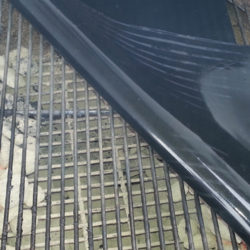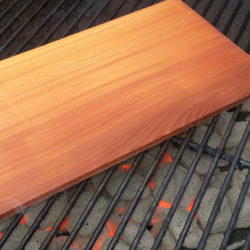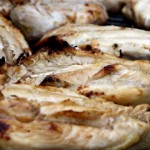Want to prepare the best tasting steak possible? A scientific approach may be the perfect way to guarantee success. Careful consideration about how you select your beef, and how it is cooked will increase your enjoyment come dinner time, and the graphic below helps to walk you through the process. Choosing the cheapest cut on the shelf might not be the best idea, and that brown lump on special may not turn out to be the delicacy you are envisioning. When it comes time to grill, proper preparation is just as important as the temperature and timing. Check out the great illustration below, and then keep reading for detailed steps and additional suggestions.
 How To Ensure The Best Flavor
How To Ensure The Best Flavor
Ending up with a grilled steak that is juicy and flavorful is not as easy as you might think, but there are only a few things to master in order to increase your odds. Proper selection of your meat goes a long way, but you will also need to cook it right to make sure it is not dry or flavorless when you pull it off the barbecue You can start out with a cheap piece of cow and then soak it in your favorite marinade in order to end up with something edible, but when you go for a more premium piece, the actual flavor of the steak will have you satisfied without adding additional sauces. If cuts are rushed to market without proper aging, natural flavors will not build, and you will end up with a chewy chunk on your plate for dinner.
What Is Aging?
All top cuts of beef will go through the aging process. When allowed time to sit, flavors are improved, and connective tissues break down to make it easy to consume. There are two types of aging, wet and dry. Most steaks in the US undergo the wet process due to speed and convenience, but the dry way is still used for more high end steaks because it is better overall, but reduces weight and takes much longer.
Dry Aging
This is the process where meat is hung to rest in a large refrigerator. After the cow has been slaughtered, the entire thing will hung up for several days in a climate controlled environment. This process is typically reserved for fancier cuts of beef because it requires large and even fat content to produce good results. After 15-30 days the meat will be more tender and more flavorful, and at this point it will be ready to eat. If you go to an expensive steak house for dinner, you may find some dry aged beef, but when pushing a cart through the grocery store, the faster and cheaper wet aged variety will be more dominant in the meat case. This is because dry aging takes much longer and reduces the overall weight of the meat.
Wet Aging
To wet age beef, it takes way less time, and has steak on the shelf within just a few days of slaughter. Freshly killed cow will be portioned of into individual cuts and then vacuum sealed to lock in the moisture. After a couple days, moisture will build to lock in flavor and tenderize the steak. This method is preferred by grocers because it is fast, and there is very little weight loss, so profit is retained as they deliver a decent tasting steak.
As the meat is allowed to rest at the perfect temperature which is very close to freezing, enzymes will break down the fat and proteins in order to transform them into amino acids, simple sugars and fatty acids. This process enhances the natural flavor, and can cause the meat to lose up to 5% of it’s water content in order to increase concentration. Longer aging is good in some cases, but more is not always better. You can have great steaks that are only aged for ten days, and you can have similar tasting meat with something that has aged for much longer. This process is very important, but it is not a clear cut case of more is better.
Fat = Flavor
Mmmmmmm…. flavor, sweet delicious fatty flavor. Some chefs will trim away all this flavorful goodness in the name of healthiness, but this may not be the best idea. When left on while cooking, it can greatly enhance the finished product. If examined closely, most animal muscle is roughly 75% water, 20% protein and 5% fat and other stuff. It is this small fraction of the overall content that makes it taste so darn good, so removing it might just ruin the meal. When heated, the fat will melt down to lubricate the muscle fibers and saturate the rest of the steak. This process keeps the meat juicy and gives it that signature flavoring This is why marbled looking steaks always taste the best, and why you can find the best cuts on parts of the cow that get the least amount of exercise.
Cook to Perfection
Choosing a great piece is one thing, but if you don’t cook it the right way, you will still be choking down a tough and tasteless meal. You don’t want to work out your jaw muscles, or settle for dipping it in sauce, so mastering the art of grilling a steak is key to enjoyment in the long run. When you place your sirloin on the grilling surface, it will heat up, and this causes the proteins to break their bonds as the unwind. As heat increases, and the steak stays over the flame, the heat will shrink the muscle fibers in order to squeeze out water and cause the protein molecules to combine back together. This whole process changes the actual structure of the protein, and turns your porterhouse into something to be proud of. As a steak cooks, it will darken in color, and basically turns from red to brown. This happens after the meat has been cooking for a while and the proteins on the surface begin to combine with the sugars on the interior, resulting in a nice meaty flavor along with the visual transformation. The myoglobin in your fillet is what makes it look red when you cut into it. It stores oxygen and holds pigment depending upon how long it has been heated. This is what gives a rare steak that familiar bloody red interior.
If you want your steak rare with a red center, grill until the temperature of the thickest portion is at 140 degrees. For well done meat, leave it on longer until it measures around 170. Obviously, the points in between will give you a medium or medium rare finish, and there is no best way. Exact cooking time and temp will be up to your taste.
Looking for a great tool to make turning your steak fast and easy? Check out the large pig tail flipper for a fun way to eliminate tongs and treat your meat better. It will help flip food quickly without squeezing out juices or pushing it all over the grill.
Not cooking outside? Discover the best way to cook a steak on the stove for those days when mother nature keeps you indoors and you still want to savor the rich, bold taste of a perfectly cooked steak. Learn about tools and techniques to retain taste when using your stove top, and cook to perfection using the timing guides that are included.





 Ordering Info
Ordering Info Customer Service
Customer Service Follow Us
Follow Us Search For Stuff
Search For Stuff Find Us
Find Us Call Us
Call Us Pay Us
Pay Us

0 Comments so far.
Use the form below to add your own thoughts or questions. Scroll down to read what other people had to say.